Dairy – should I stay or should I go?
The number of dairy farmers is falling every week, as the price crisis continues to bite.
Behind those falling producer numbers are tough decisions and for some, the decision is forced.
AHDB Dairy estimates that about half of British dairy farms were financially vulnerable in December 2015. That means they could not cover their cash costs.
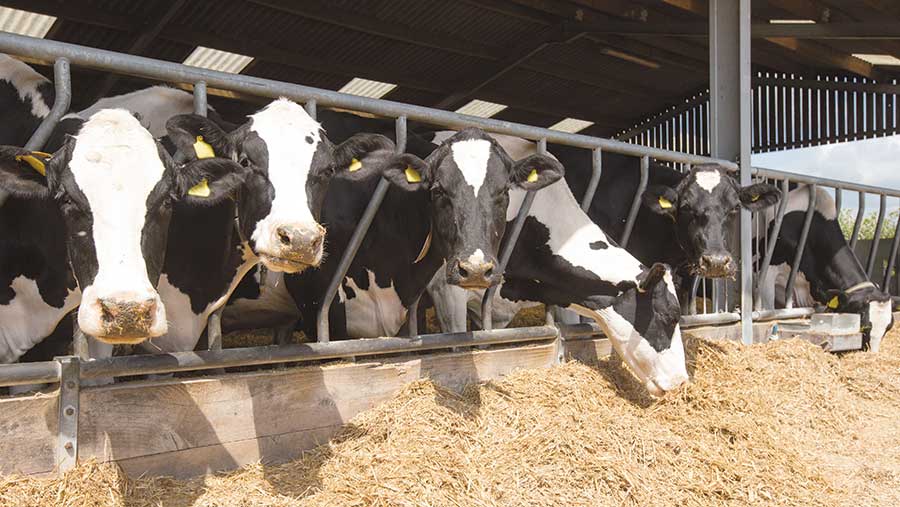
© Tim Scrivener
Only about 15% were “long-term sustainable”, making more than their full economic costs. The situation will have worsened over the spring. Earlier this month Rabobank analysts pushed any milk price recovery hopes back to 2017.
Farmers weighing up leaving dairy, or making a dramatic change to their business, have a lot to consider.
See also: Milk price recovery hopes pushed back to 2017
Business planning
- Know your full production costs, including rent, finance and drawings
- Run predictions based on five-year average milk price, current price and future forecasts
- Calculate expected losses this year and how much you can or are willing to stand
- Changing dairy system is an option, but can be easier with a break from production
- Tenants may face restrictions on farm type or holding
- Involve everyone in the discussion and decision
Milk prices and production costs
The first question to ask is about the future of the market. “People have to take a view on where they think the milk price may be for the next five years,” says Rob Hitch, partner at accountant Dodd & Co.
“They have to decide whether they are really happy with that. [Some people] could be spending a year at 20p or less, which is very difficult.”
But any bets on the future must to be based on data and linked back to the dairy business at home.
Tony Evans, head of farm business consultancy at Andersons, says farmers should look at five-year averages.
The average milk price since 2009 is 26-27p/litre, well below the heights of more than 30p/litre two years ago.
Then, they need to put this against their full costs of production and work out if they need to overhaul their business.
“If you have a three at the start of your [cost of production] numbers, you have got a serious problem,” Mr Evans says. “You are highly unlikely to get over any losses.”
That is the longer term, but many now face months in the red.
Producers must decide how big a loss they are willing or able to put up with, Mr Evans says, during the current slump.
If a dairy unit averages full economic costs of 30p/litre over the past three years, the recent slump in feed, fuel and fertiliser prices might drag that down to 28p/litre.
If the farm’s gross income, including stock sales, is 24p/litre that leaves a 4p/litre gap.
For a herd producing 1.5m litres, that is an annual deficit of £60,000.
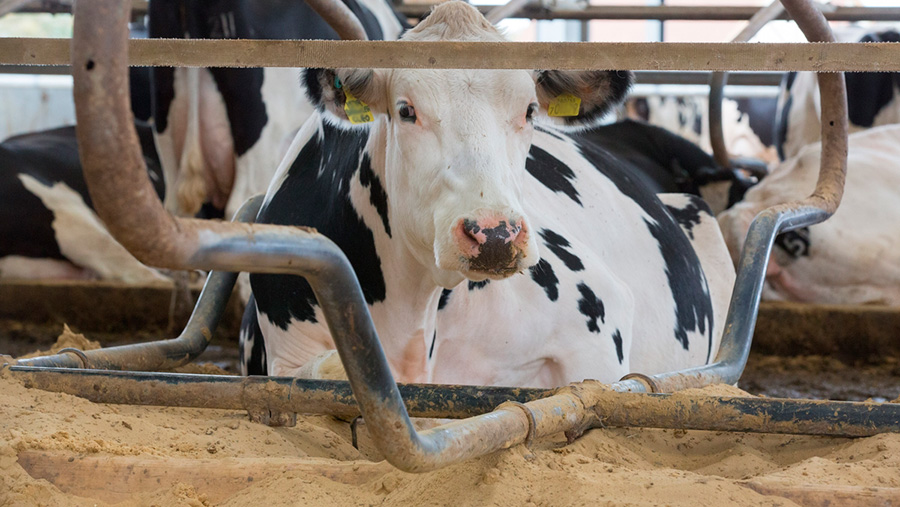
© Tim Scrivener
“If you don’t restructure any finances and don’t stop spending on drawings, either that has to come from reserves or you need a bigger overdraft,” Mr Evans adds.
“People have to measure how much money they are prepared to risk.”
Once producers have worked out their own dairy data and made forecasts, they can start to make choices.
Finance issues
- Watch out for tax on machinery and youngstock sales
- Sales of land parcels could attract large capital gains tax bill
- Longer-serving staff may need redundancy payments
- Plan as far ahead as possible, allowing tax considerations to be managed
Sometimes the deciding factor can be the need for investment or to recruit a replacement herdsman.
Any plans might have to factor in the increasing discrimination of processors, who might start charging for pick-ups further away from their core milk fields.
Alternative structures
The choices may not be as simple as “stay or go”.
A joint venture could be an option, bringing in a partner with expertise and the desire to trade profitably in dairy.
This can suit for those who want to retreat top some extent from day-to-day physical work but who for a variety of reasons want to continue in farming.
Or producers could look at moving into other parts of the industry, such as livestock.
But Nick Holt-Martyn, The Dairy Group principal consultant, says the market slump across all sectors, and the tough economics of beef and sheep, are not especially comforting for dairy farmers.
Restructuring the current dairy business, perhaps switching to a lower-cost system, could be an option, he says.
A sabbatical from milking, where the herd is dispersed and the dairy restarts a few months later with a new model, could stem some immediate losses.
“Fixed costs can be very lumpy. It is those that are more difficult to cut,” Mr Holt-Martyn says.
“If you wanted to restructure your business it is easier to do if you have not got cows there. But there is a risk you might not be able to carry on your milk contract.”
Legal issues
Milk contracts need thought. Deals with processors typically have 12-month notice periods for both sides. That means not delivering milk could risk a breach of contract.
“Read your contract again, see what the terms are, and seek individual legal advice,” says NFU chief legal adviser Nina Winter.
“If you’re retiring from dairy, talk to your milk buyer about your situation.”
Tenants may face restrictions. Many tenancy agreements, especially those under the Agricultural Holdings Act or county council holdings, require the whole farm to be committed to dairying.
There might also be limits on bringing other animals on to the holding, which could stop new enterprises like grazing other farmer’s stock or rearing heifers.
Landlords and tenants could be tied up in other ways. If a landlord has invested in fixed equipment, like a slurry store, both sides might have entered a memorandum of understanding.
The tenant, who was supposed to pay rent over the time the slurry store was to be paid off, might then be saddled with the cost.
“The first thing we say is, ‘What was on your tenancy agreement?’” says Tenant Farmers Association chief executive George Dunn. “If you find yourself restricted you have to start a dialogue with your landlord or your landlord’s agent.”
If farm staff lose their jobs because milking stops, statutory redundancy provisions need to be considered.
“Very simply, it is not free to lay someone off,” says Dan Knight, director at accounts Old Mill. “You have to look at how long they have been there and understand what you have to pay them.”
Finance questions
- Watch out for tax on machinery and youngstock sales
- Sales of land parcels could attract large capital gains tax bill
- Longer-serving staff may need redundancy payments
- Plan as far ahead as possible, allowing tax considerations to be managed
Family considerations
The rest of the farming family might have opinions too. The current dairy slump might accelerate thoughts about succession, says Mr Knight.
Those close to retirement but with no-one to take over might find selling up a better route than stacking up growing losses. But if there are family members, they might want to stick it out in dairy and take a greater role in the business.
“If you have got two sons who are as keen as mustard, you might have the ability to withstand being in the red a couple of years,” Mr Knight says. “Now has never been a better time to consider succession planning.”
If a farm gets to the point of planning a sale, and ending dairy trading, there is more to think about still.
Plan carefully to minimise tax
Sales of stock on a herd basis are exempt from tax. But profit from selling machinery or young stock will be taxable. Also, sales of farm kit on which an annual investment allowance was being claimed could be an issue.
That relief would be lost and any income from selling would lead to a tax bill.
The correct timing of stock, machinery or land and property sales, along with advice about how these are structured, can make a huge difference to any tax bill.
“Make sure you know exactly what the tax position is before you dispose of things,” says Dodd & Co’s Mr Hitch. “Make sure you work through the implications.”
How and stock is sold is also important. Clive Norbury, director at auctioneer Wright Marshall, says the most valuable time to sell cows is when they are fresh calved.
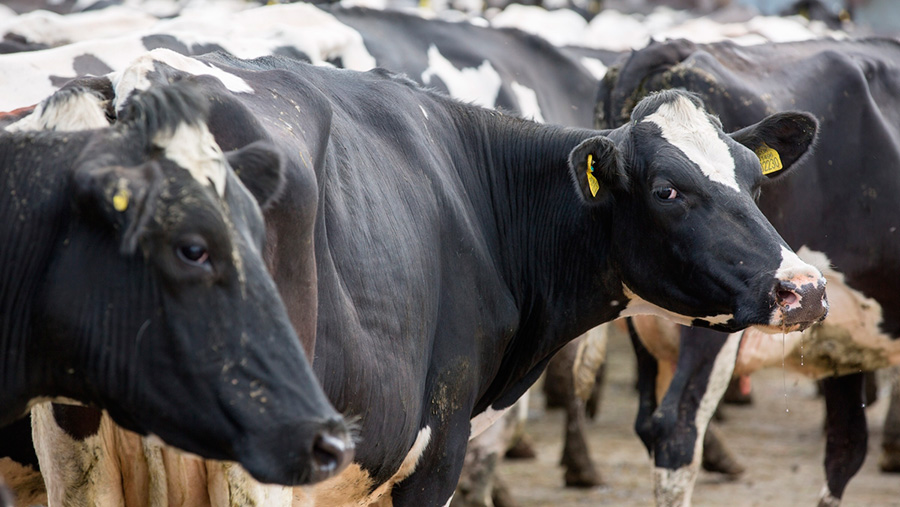
© Tim Scrivener
There is good demand for autumn calvers, as long as they are PD’d back in calf, he says. Keeping cows in good condition is also vital.
“Try and maximise the value of the cattle at that moment in time,” Mr Norbury says. “The time of year [for a sale] is not particularly relevant, because it depends on when the cows are calving.”
Other help
- The Farming Community Network offers a sounding board and can point farmers in the direction of help. Its helpline number is 03000 111 999
- AHDB is putting tools for tough decision-making on its website, dairy.ahdb.org.uk
- NFU members seeking legal help with contracts can contact NFU CallFirst on 0370 845 8458
Then what?
Think about what will come after the sale – this is important both for personal and financial reasons.
Booking the sale is potentially the easier decision, says Andersons’ Mr Evans.
The hard bit comes after, when a farmer is left with a wad of cash and little else.
That makes it a gamble to strip out all the costs, sack all the staff who had been invested in, and sell any kit that could be useful in other operations, he adds.
“Be clear about what you are going to do afterwards. A lot of businesses I have seen from a distance spend the next 12 months deciding and burning the cash they have raised from the sale.”
These decisions are individual and often complex, so the whole family should be involved in the discussion, as it might open up or close down options for later generations, say advisers.
“It is really tough,” says Charles Smith, Farm Community Network chief executive. “What they do as a dairy farmer defines who they are as people.”
“Most people are born onto a dairy farm and have never known any other life. The more down you get, the more difficult it is to think logically and rationally.”
Case Study: Richard Roberts
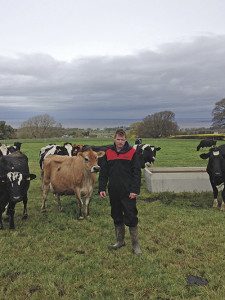
Richard Roberts © Richard Roberts
North Wales dairy farmer Richard Roberts mulled over the “stay or go” question in the spring of 2007. Since then, he’s doubled his herd size and wants to keep making a decent living in the sector, to keep supporting his family.
Mr Roberts was days away from his herd’s dispersal. Nine years ago, his milk price was 15p/litre and the business was bleeding cash. He crunched his data, looked at current and future prices, and discussed with advisers and family. He came to a decision: an auction was booked for Wednesday 7 August.
The catalogue was drawn up. The cows were still out and grass covers were running down. Knowing the sale was coming up, no fertiliser had been applied.
“There was no chance of us getting a new contract somewhere else and we were losing money. So I spoke to the family and made a group decision. That was the hardest one: that we were going to sell up,” Mr Roberts says.
But the sale was stopped by the foot-and-mouth outbreak at Pirbright, the weekend before the sale. Movement restrictions came in, forcing the Roberts to make new plans.
Luckily for them, the milk price began to creep back up. To pay off some debt, they cut cow numbers from 170 to 100.
“We did the figures and we could manage with the increasing milk price. I love what I do and we do not do it to make millions, but there was light at the end of the tunnel.”
In the following years, Mr Roberts invested in improving the milking parlour and built new dairy sheds. He says his bank has been supportive in his two decades running the farm. He has been upfront and honest with them during discussions, and never tried to extend his borrowing facilities.
The herd was built up to 200 cows by April 2014. Then, he decided to sell the 120-130 young stock, which were a “massive drain” on the business. He wanted to a run a simplified system with a flying herd. The cash also let him buy another 50 cows.
Even in this tough market, Mr Roberts is keeping the business above water. His full costs, including family income, come to about 22p/litre. His milk price is 23p/litre. The farm assets are maximised, with full sheds and as many cows as the 111-ha, rented holding can take.
Case Study: Andrew Jeanes
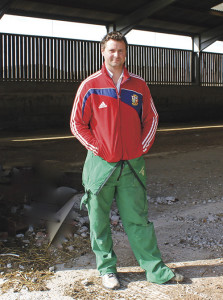
Andrew Jeanes © Laura Watts
When Andrew Jeanes came home to farm with his parents 14 years ago the family made a plan. If after five years or so the returns had not improved and they were still moaning about supermarkets and milk prices, they would quit dairy. In February, they finally sold their herd of 290 cows.
In the meantime, from 2007 they had started to diversify the business.
Mr Jeanes says they have not looked back.
“We have been so busy since, I’ve not stopped and thought about it,” he says. “I feel a lot more relaxed. The biggest worry was making the decision. We mulled it over and over.”
Mr Jeanes’s grandfather started dairying in Somerset in 1913. In the past 20 years, they built up a larger herd, that were fully housed, milked three-times-a-day and calved year-round.
The farm supplied Tesco, on a cost-of-production contract through Muller Wiseman, which Mr Jeanes says was “excellent”.
They were not losing money with a milk price at about 30p/litre, but were concerned these premium contracts were not guaranteed in the future and the dairy needed capital investment.
“We did a projection for five years on 22p/litre – that looked horrendous. So it was really academic when we went back to the raw figures and saw what other options were available.”
The farm was 607ha in total, with 101ha of grass, the same area in maize and the rest growing milling wheat for Warburtons.
On top of the arable business, they had been steadily building up diversifications. They now have a wedding venue, fishing lakes, industrial lets and will soon open some barn conversions for short-term lets.
“These projects not only help give a financial cushion, but also self confidence that we can do something and succeed in it, other than dairy and arable farming,” Mr Jeanes says.
Even so, they had to time their exit carefully. At the point of sale in February, they had not yet invested in another year’s maize crops and were free of TB, which had previously shut them down for two to three years.
The family are still assessing the options for the dairy sheds after stopping milking. They also have the option to grow crops for an AD plant nearby, using the land that was dedicated to the herd.
Mr Jeanes says stopping dairy has been a relief. He had been spending less time with family and friends, playing less sport, felt stressed and older – despite being just 34. But the day of the sale was still tough, especially for his parents.
“We sold every gate, every water trough, because we could not bear to look at it.”
